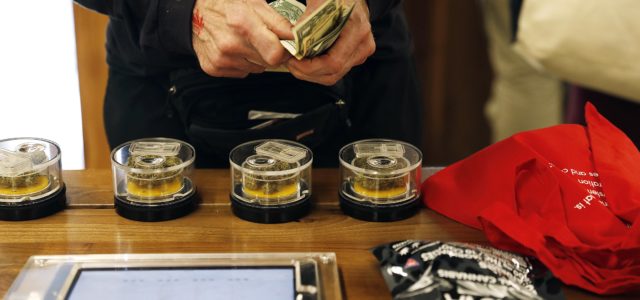California’s permanent cannabis regulations could affect marijuana delivery, edibles and advertising
Uncategorized July 13, 2018 MJ Shareholders


Cannabis retailers soon may be able to deliver marijuana anywhere in California, no matter what city or county rules say.
Also, it’s likely that medical marijuana patients will be allowed to buy edibles infused with cannabis that’s more potent than currently permitted under state law.
And on another front, the rules for what companies can and can’t say when advertising cannabis products soon could become more strict.
All three shifts are among the new rules listed Friday by state regulators in their long-awaited draft of permanent regulations for California’s cannabis industry.
The permanent regulations will replace the “emergency” rules under which the multibillion-dollar industry has been operating this year. The public has 45 days to comment — in writing or at one of 10 hearings to be held soon throughout the state — on the proposed permanent cannabis rules before they’re adopted by regulators.
This is the state’s fourth round of developing regulations for the cannabis industry.
Rules first were drafted for the medical marijuana sector, but those had to be scrapped after Californians voted to approve recreational marijuana in November 2016. The state released its first round of emergency regulations for both sectors in November 2017, then made some changes as they extended those emergency rules this May. But the goal is to get final rules in place by the end of the year.
“This is about seven months of listening, going to meetings and events and all of these town halls and summits, and hearing what people had to say about how the emergency regulations were working or not working,” said Alex Traverso, spokesman for the Bureau of Cannabis Control, which oversees marijuana retailers, distributors, event promoters and lab testers.
Many of the changes simply clarify the laws that regulators already laid out, Traverso explained. He said that’s true, for example, of what seems to be a big change to cannabis delivery rules.
Emergency regulations said cities couldn’t stop marijuana delivery services from using public roads. But that was interpreted by some city attorneys to mean that even though municipalities couldn’t prevent licensed deliveries from passing through their jurisdictions, they could ban them from actually making stops in their towns. The recommended permanent regulation — included in 136 pages of rules issued Friday by the bureau — clarifies the law this way: “A delivery employee may deliver to any jurisdiction within the State of California.”
Given that most California cities still don’t allow retail cannabis sales, any expansion of delivery services figures to make cannabis more accessible to more people, said Hezekiah Allen, executive director of the California Growers Association.
The bureau’s updated rules also include tougher guidelines for cannabis advertisers and packaging. Retailers will no longer be able to promote free products, for example. And there are stricter rules about marketing products in ways that might appeal to kids.
In its separate list — 111 pages of draft permanent rules — for companies that make marijuana products, the Department of Public Health’s Manufactured Cannabis Safety Branch is proposing to loosen one rule that figures to benefit medical marijuana patients.
Emergency rules say edible products must be in packages with no more than 100 total milligrams of THC, the chemical in cannabis that can make people high. The rules out Friday suggest letting patients with doctor’s recommendations for medical marijuana buy dissolving “edibles,” such as lozenges or mouth strips, that have up to 500 milligrams of THC.
The Department of Food and Agriculture’s CalCannabis division, which oversees cultivators, also issued 68 pages of new rules that don’t include a change favored by growers.
The department didn’t add back in a 1-acre cap on grow space per farmer. That cap was floated in state environmental documents, but dropped in emergency regulations. The California Growers Association in January sued the state over that change, saying it was needed to give small- and medium-sized growers a chance to compete in the new market.
Many licensed retailers say they’re struggling to stay afloat. So Traverso said most of the other changes included in the rules released Friday are technical tweaks aimed at making compliance easier, including loosening a number of rules for distributors and easing a couple lab testing and labeling requirements.
That should reduce the number of products that Allen said have “unnecessarily” failed state tests undertaken since new requirements kicked in July 1.
“There is a lot more work to do, but this is a historic step in this process,” Allen said of the new regulations.
The three state agencies regulating cannabis will hold public hearings over the next 45 days. Visit Cannabis.ca.gov for times and locations for all 10 hearings.
MJ Shareholders
MJShareholders.com is the largest dedicated financial network and leading corporate communications firm serving the legal cannabis industry. Our network aims to connect public marijuana companies with these focused cannabis audiences across the US and Canada that are critical for growth: Short and long term cannabis investors Active funding sources Mainstream media Business leaders Cannabis consumers








